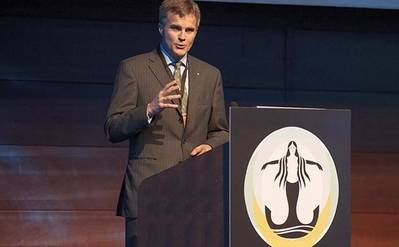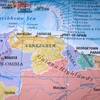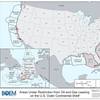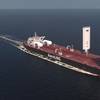Offshore Marriage of Interests Judged Successful
Nor-Shipping 2013 'Agenda Offshore' hear the Director General of the Norwegian Shipowners’ Association pronounce the marriage of maritime and offshore oil and gas industries interests a success.
The offshore industry is “a legitimate child” of the marriage between oil and gas as well as maritime companies. “It is maybe a relationship driven more by cooperation and innovation than by love or passion – a bit of an arranged marriage maybe – but today the offspring of this relationship are the specialized vessels, drillships and rigs that conduct operations throughout the entire value chain offshore,” said Sturla Henriksen, Director General of the Norwegian Shipowners’ Association.
“This is only the beginning of the offshore adventure,” he added.
Andy Brown, Upstream International Director at Royal Dutch Shell, noted the need to work smartly together as the offshore industry pushes borders at new frontiers to meet the world’s insatiable appetite for energy. The global energy company also has a 120-year history in shipping.
“The integration between our businesses is increasing all the time. We need to work more closely with the maritime industry to make sure all operations are flawless all the time,” Brown said.
On the Norwegian Continental Shelf (NCS), close to 60 percent of resources have yet to be produced, said Ola Borten Moe, Norway’s Minister of Petroleum and Energy. Activity on the NCS is high, and exploration activity is especially strong, requiring access to a significant number of rigs and competent workers to operate them.
One new frontier is the Arctic. “We see increased concern for protecting our environment and the health and safety of our people,” said Statoil CEO Helge Lund. This gives rise to the need for more transparency as well as cooperation and collaboration between communities, governments and industry. “In the freezing cold of the Arctic, no one can survive alone for very long,” he said.
Kristian Siem, Chairman and CEO of Siem Industries, also emphasized the need for the oil and gas industry and oil service providers to work more closely together from the very beginning of the development of fields. “Everything has to work perfectly,” he said.
It is precisely this good cooperation between oil and gas companies and service providers that has made the North Sea a success story, said Ivar Brandvold, CEO of Fred. Olsen Energy.
Such cooperation will be even more important as the Arctic opens up. “We’re no stronger than our weakest link, especially in the Arctic,” said Irene Waage Basili, CEO of GC Rieber Shipping.
Moving into the Arctic will also require better technology, competences and processes, said Remi Eriksen, CEO of DNV Maritime and Oil & Gas. As the industry recruits badly-needed new talent to develop new frontiers, it is important to remind people of the success stories. For example, the rate of incidents in offshore shipping has been six times less than for general cargo ships, and the fleet currently operating in the High North is “completely new”, Eriksen said.
Not only will the industry need to do a better job at communicating its success stories to attract people, but it will also need to rely partly on automation, said Gunvor Ulstein, CEO of Ulstein Group.






